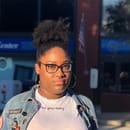With the rise of the internet, it seems as though an entirely new culture has formed. Our culture has changed so much within the last ten years. It may be unrecognizable to some people. Millennials and Generation Z have become more globalized than ever before. We can instantly talk to people on the other side of the world and get a perspective much different than our own. This is something that the generations before us oftentimes find difficult to understand because the access we have to different people and cultures is a luxury they never had. This has created a generational divide of sorts within activist communities.
Many older activists will argue that social media activism is not a valid way to challenge systemic injustice and does not carry the same weight as physical protests or pursuing change through the judicial system. Countless young people would beg to differ. The internet has given us a clearer perspective on issues outside of the U.S. Instead of getting all of our information from the American media, we can now hear it “straight from the horse’s mouth,” so to speak. Raw and uncut. People from every walk of life can come together, voicing resistance to institutional oppression in ways that include using social media platforms like Twitter and Facebook. These powerful coalitions of resistance will allow us to organize more effectively.
In my opinion, creating is one of the most effective ways to bring about change using the internet. It is something that is powerful and important to social change movements because it allows activists to express complicated perspectives that could otherwise be difficult to convey to others. When used correctly, art is capable of bringing people to greater depths of empathy, therefore deepening conversations about systemic injustice. You can be any kind of creator, an artist, graphic designer, photographer, orator, dancer, poet, etc. It’s important to use your own creativity to inspire, and mobilize others, and for that other to reblog and retweet that creativity. I am an artist myself, and posting my work on the internet has brought about positive dialogues with people who may have views different than mine or are not aware of the issue that the piece was created around, therefore, causing change.
While dialogues and conversations may seem little, it is the little changes that add up to create big change. At times many question if social media is a valid form of advocacy, when used appropriately along with more traditional approaches it can create tangible change. Social media activism is real activism when used correctly. The fact that some countries are limiting the access their citizens have to certain social media platforms speaks volumes about the power these tools give to activists fighting for social change. Using this contemporary approach to activism in conjunction with some of the more traditional strategies can get us closer to the goals that both younger and older activists share.


